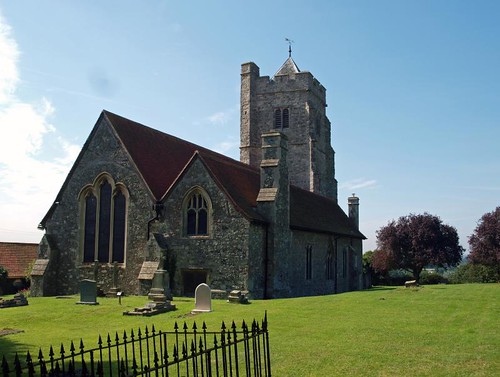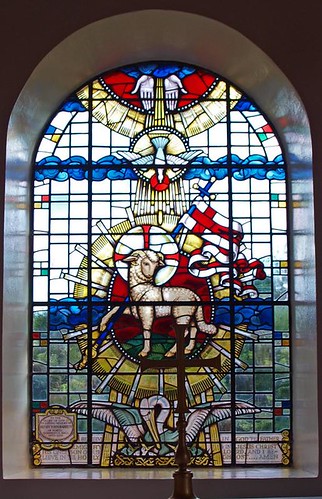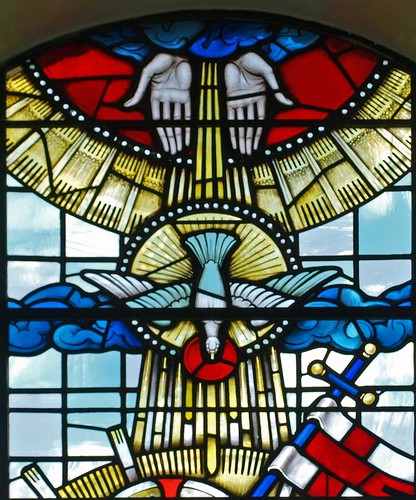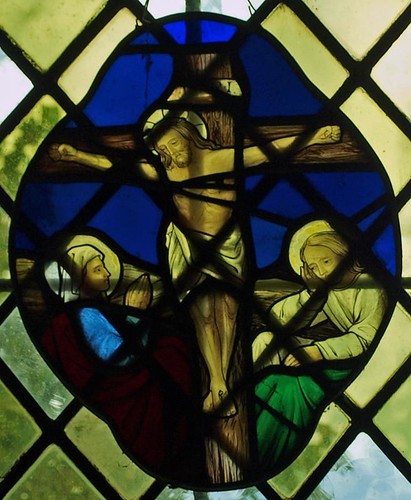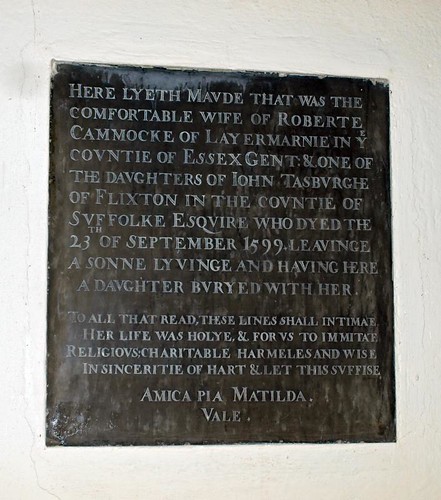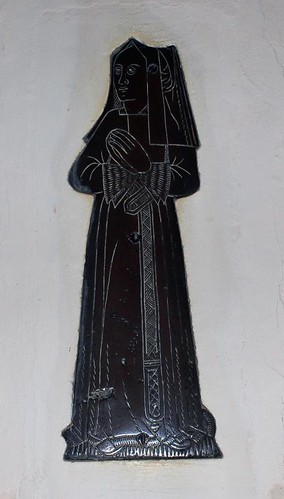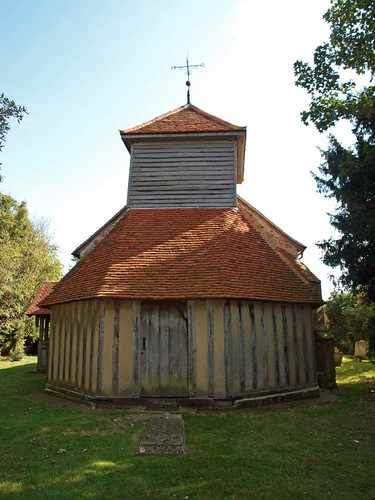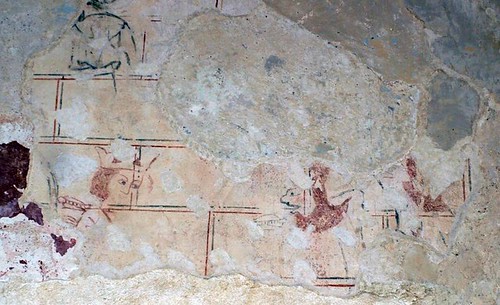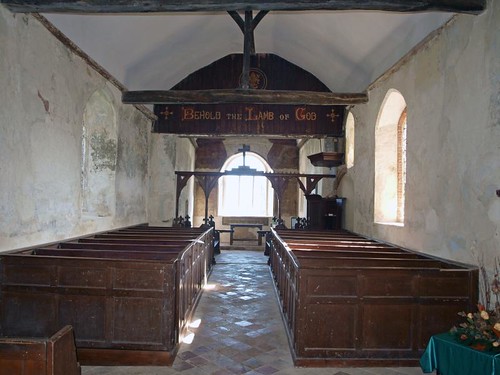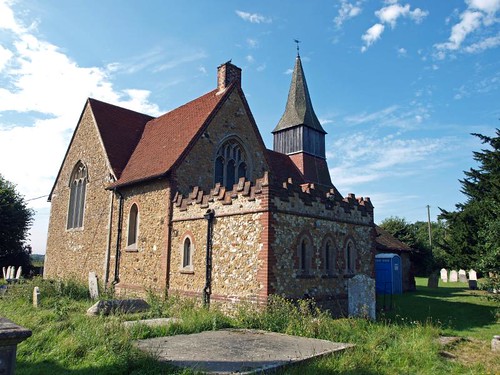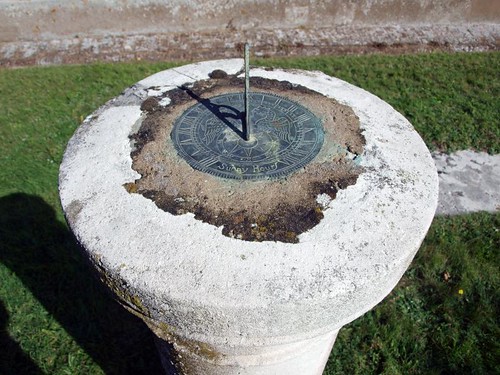ALL SAINTS. The surprise of the church is the MONUMENT to Edmund Humphrey d. 1727, signed, according to Mrs Esdaile, by Samuel Chandler. It is a large marble affair with four standing figures and one semi-reclining. The four are arranged triptych-wise with two single figures in niches in the wings and a couple higher up together in one niche. Open segmental pediment above them. - The church still has its plain Late Norman S doorway and its C13 chancel (see the shafted splays of the new E window, inside a small N lancet, and the trefoiled Sedilia and Piscina). The rest is mostly Perp. Quite a big W tower with diagonal buttresses, SE stair turret, large W window (with tracery that may be C17), battlements and a low pyramid roof. N aisle arcade with short octagonal piers with concave sides and double-hollow-chamfered arches, N chancel chapel of one bay of the same characteristics, and N vestry, two-storeyed with a chimneystack. - STALLS in the chancel with pretty poppy-heads, decorated e.g. with a dog, a lion, a bear, a monkey. Also some traceried panels perhaps re-used. - PLATE. Cup of 1562 with two bands of ornament; Paten on foot, 1641. - BRASSES. Civilian and two wives, c. 1535, with children below. On a stone slab of c. 1200 with an adorned rim with leaves; also birds.
RETTENDON. Its tower is seen for miles on land and looks out to the sea; the walls are five feet thick. It must have been well known to Rettendon’s martyr hero, who was burned to death for his faith in 1556; he was John Derifall. The church is from the 13th and 15th centuries, its oldest possession being a stone from a tomb of Becket’s time carved with birds and foliage. It was used after the Reformation as a gravestone for an unknown civilian whose family portraits are on it in brass; there are himself, his two wives, and seven children. Close by it is the portrait of Richard Cannon.
On the floor are brass portraits with a tragic tale behind them, those of Richard Humfrey, who died a few years before Shakespeare and is here with his three sons kneeling one behind the other. It was one of these sons who accidentally shot his father, a tragedy which caused great concern at the time, the son being tried and convicted and set free by royal pardon. The actual document of the pardon hangs in the chapel here, with the Great Seal of James the First hanging from it. For a hundred years after this tragedy the family thrived at Rettendon, and then came the time of Edmund Humfrey to pass away, a bachelor and the last of his family. He resolved, apparently, that he should not be forgotten, and he built for himself a vast monument completely filling the east wall of the chapel. Sunday after Sunday he would gaze at his marble figure with sobbing cherubs lamenting him. Above him stands an armoured man and a dignified woman, and there are grey pillars supporting a canopy over which are trophies and a painted shield, while a silver arm holds out a gilded cross.
It is pleasant to turn from this extraordinary structure, the work of an Italian craftsman, to the beautiful woodcarving in the choir, where nine bench-ends have elaborate poppyheads carved with beasts, a bear with a ragged staff, and a child in swaddling clothes on which remain the claws of an eagle. In the backs of some of these benches are traceried panels, probably from an ancient screen; they are of much beauty.
On the floor are brass portraits with a tragic tale behind them, those of Richard Humfrey, who died a few years before Shakespeare and is here with his three sons kneeling one behind the other. It was one of these sons who accidentally shot his father, a tragedy which caused great concern at the time, the son being tried and convicted and set free by royal pardon. The actual document of the pardon hangs in the chapel here, with the Great Seal of James the First hanging from it. For a hundred years after this tragedy the family thrived at Rettendon, and then came the time of Edmund Humfrey to pass away, a bachelor and the last of his family. He resolved, apparently, that he should not be forgotten, and he built for himself a vast monument completely filling the east wall of the chapel. Sunday after Sunday he would gaze at his marble figure with sobbing cherubs lamenting him. Above him stands an armoured man and a dignified woman, and there are grey pillars supporting a canopy over which are trophies and a painted shield, while a silver arm holds out a gilded cross.
It is pleasant to turn from this extraordinary structure, the work of an Italian craftsman, to the beautiful woodcarving in the choir, where nine bench-ends have elaborate poppyheads carved with beasts, a bear with a ragged staff, and a child in swaddling clothes on which remain the claws of an eagle. In the backs of some of these benches are traceried panels, probably from an ancient screen; they are of much beauty.
